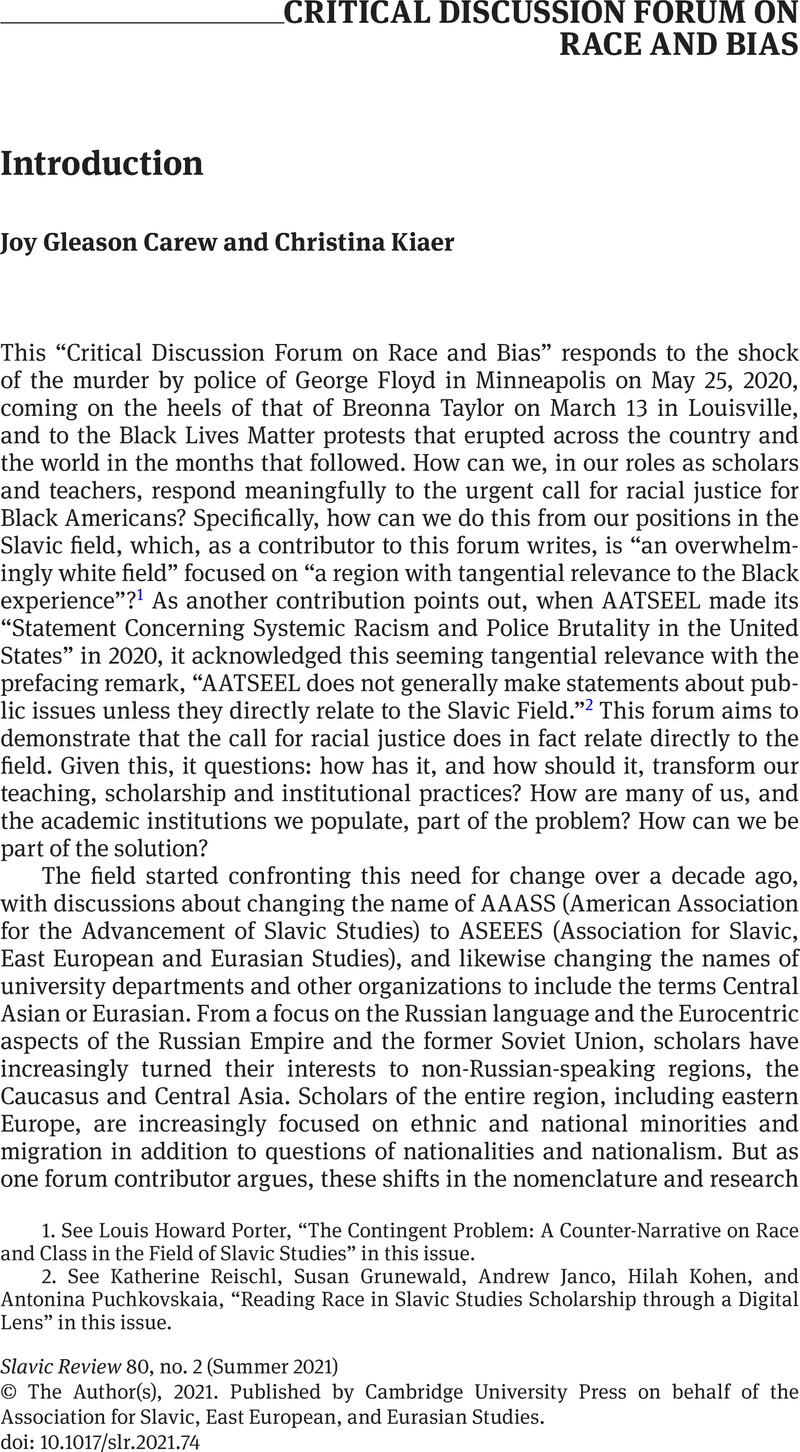Article contents
Introduction
Published online by Cambridge University Press: 06 September 2021
Abstract

- Type
- Critical Discussion Forum on Race and Bias
- Information
- Copyright
- Copyright © The Author(s), 2021. Published by Cambridge University Press on behalf of the Association for Slavic, East European, and Eurasian Studies
References
1. See Louis Howard Porter, “The Contingent Problem: A Counter-Narrative on Race and Class in the Field of Slavic Studies” in this issue.
2. See Katherine Reischl, Susan Grunewald, Andrew Janco, Hilah Kohen, and Antonina Puchkovskaia, “Reading Race in Slavic Studies Scholarship through a Digital Lens” in this issue.
3. See Marina Mogilner, “When Race Is a Language and Empire Is a Context” in this issue.
4. See Sunnie Rucker-Chang and Chelsi West Ohueri, “A Moment of Reckoning: Transcending Bias, Engaging Race and Racial Formations in Slavic and East European Studies” in this issue.
5. Bonilla-Silva, Eduardo, Racism Without Racists: Color-Blind Racism and the Persistence of Racial Inequality in America (Lanham, MD, 2017)Google Scholar.
6. Reischl et al., “Reading Race.”
7. See Erin Katherine Krafft, “Russian Literature and History within Anti-racist Pedagogy” in this issue.
8. See Rossen Djagalov, “Racism, the Highest Stage of Anti-Communism” in this issue.
9. See Christy Monet, “The Afterlife of Soviet Russia’s ‘Refusal to be White’: A Du Boisian Race-Conscious Lens on Post-Soviet Russian-US Relations” in this issue.
10. Porter, “The Contingent Problem.”
- 1
- Cited by


